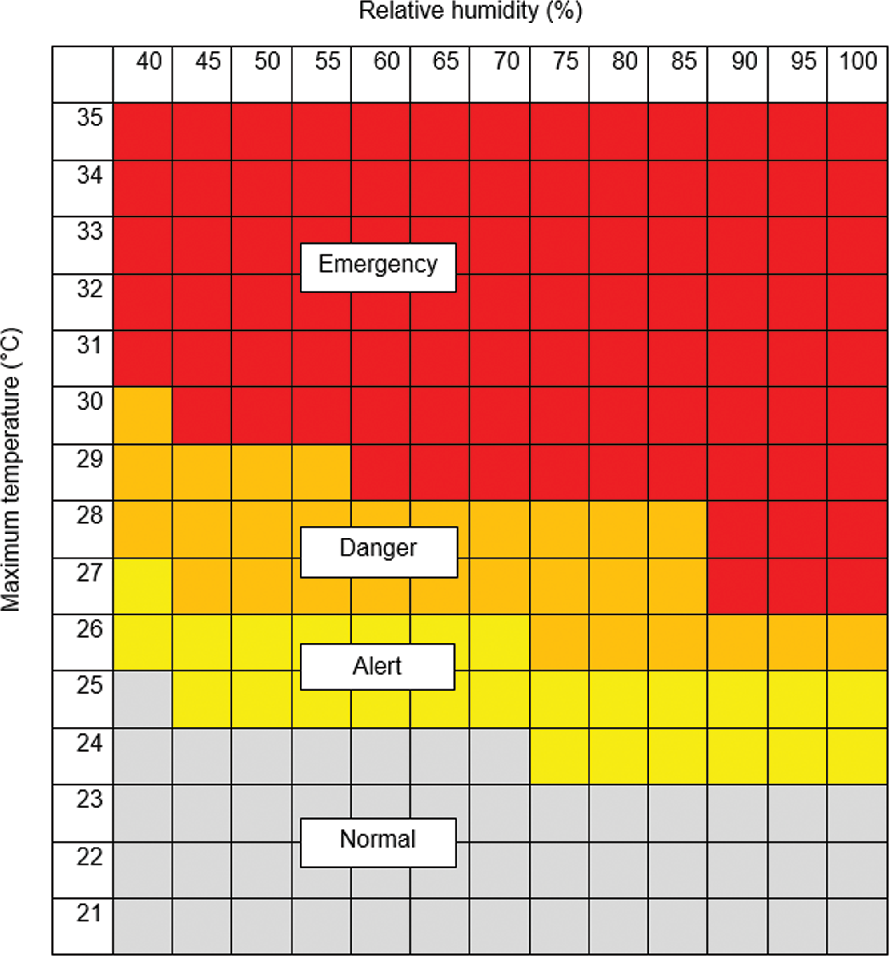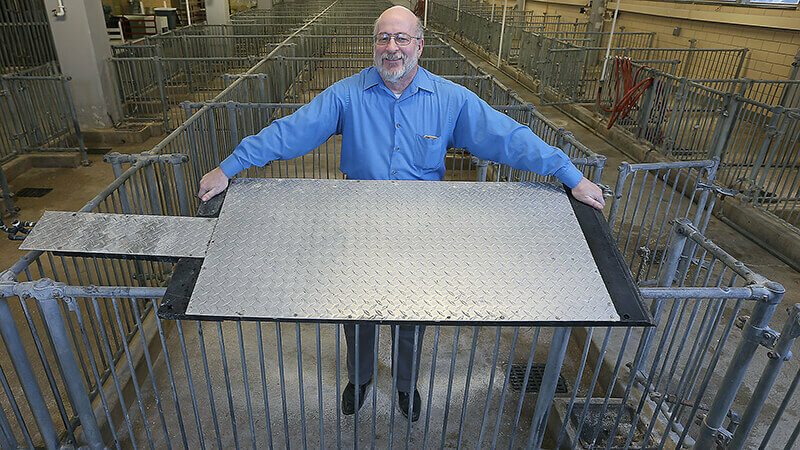Chilled water cooling pads to reduce heat stress in pigs
A team of scientists at Purdue university in the USA has developed cooling pads to keep pigs cool and reduce the impact of heat stress on milk output and piglet growth.

In a context of global warming, recent heat waves also affect animal welfare. This is particularly true for pigs, among which heat stress negatively affects voluntary feed intake, lowers reproductive performance and growth (e. g. heat stress impairs female milk production and piglet weight gain). [1, 2] For instance, acute heat stress can induce a 30-50% reduction in voluntary feed intake at temperatures around 30°C and above. [1] Lactating sows tend to lower their metabolic heat production by reducing their feed intake and milk output. As a result, their piglet growth and subsequent ability to reproduce are adversely impacted.
Annual losses due to heat stress in pigs are estimated at 481 million USD for the US livestock sector.
Several cooling technologies have been researched to reduce heat stress in pigs. [1, 2]
A team of researchers from Purdue University’s Department of Agricultural and Biological Engineering and Department of Animal Sciences has developed a cooling pad technology for pigs. [4] Each pad consists of a rubber base and a 2 x 4-foot (610 x 1,219 mm) aluminium tread plate, placed between a network of copper pipes and temperature sensors.
The temperature sensors detect when a pig lying on the pad is too hot. A connected pump is then triggered to circulate cold water through the pipes, flushing out the warm water already in them. This process is repeated every few minutes to bring the pig’s body temperature back down to normal. Moreover, the flushed warm water can be chilled and reused.
The researchers found that piglets who were on the cooling pads had a 26% increase in weaning weight and 7.2% increase in feed intake. Testing was finalised in October 2023. The technology has been patented and should be commercially available in the North American market in spring 2024.

Sources
[1] Godyń, D.; Herbut, P.; Angrecka, S.; Corrêa Vieira, F.M. Use of Different Cooling Methods in Pig Facilities to Alleviate the Effects of Heat Stress—A Review. Animals 2020, 10, 1459. https://iifiir.org/en/fridoc/142794
[2] Mayorga, E. J., Renaudeau, D., Ramirez, B. C., Ross, J. W., & Baumgard, L. H. (2019). Heat stress adaptations in pigs. Animal Frontiers, 9(1), 54-61. https://doi.org/10.1093%2Faf%2Fvfy035
[3] Mutua, J., Marshall, K., Paul, B., & Notenbaert, A. (2020). A methodology for mapping current and future heat stress risk in pigs. Animal, 14(9), 1952-1960. doi:10.1017/S1751731120000865
[4] IHT Group to manufacture, sell hog-cooling technology developed at Purdue. https://www.purdue.edu/newsroom/releases/2023/Q3/iht-group-to-manufacture-sell-hog-cooling-technology-developed-at-purdue.html
